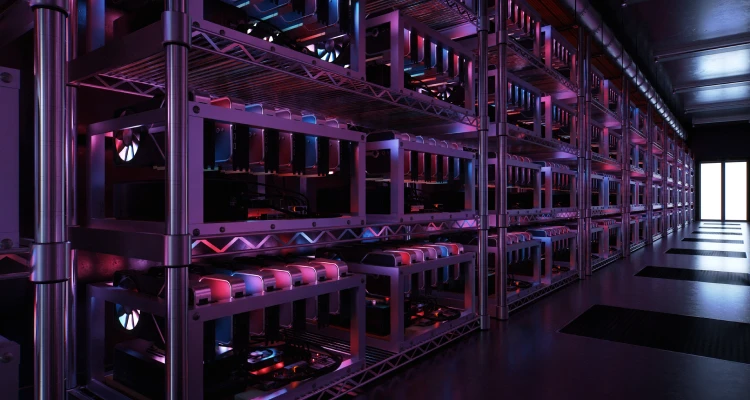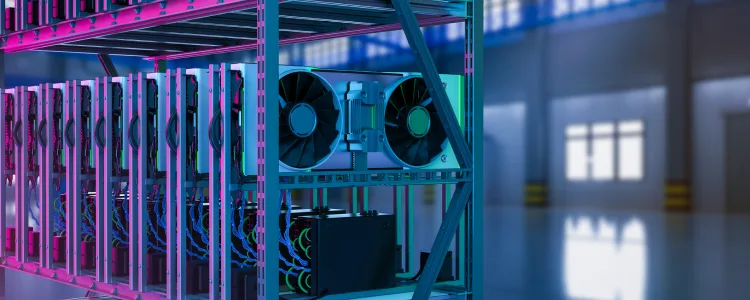How to Build a GPU Cluster for Deep Learning

In this AI-driven era, the installation of a GPU cluster has emerged as the next important step that organizations will undertake to accelerate deep learning, scientific computing, and high-performance data analytics. With expertise in high-performance computing and dedicated GPU server hosting, ServerMania is a trusted authority when it comes to designing scalable GPU clusters that cater to specific needs. The following article will take you through some key considerations and steps for building an efficient GPU cluster.
In this tutorial, you will be taken through hardware, software, and networking aspects of a very powerful GPU cluster, which would be just optimal for parallel processing, and deep learning models. From choosing just the right type of GPU to system optimization for scalability, this article covers every major decision in depth.
Find out more: What is the Best GPU Server for AI and Machine Learning?
What is a GPU Cluster?
In a normal setting, a GPU Cluster is essentially different servers that are connected, each with one or several graphics processing units within. The clusters, therefore, are designed to deliver the higher levels of parallel computation that are characteristic of deep learning, machine learning, and scientific simulation. The reason GPU clusters become an important concern in high-performance computing environments is that they can manage enormous volumes of data with much superior velocity and efficiency partly due to their GPU form factor, which optimizes the physical design and integration of GPUs for maximum performance.
Find out more: What is a Server Cluster?

Key Considerations When Building a GPU Cluster
Choosing the Right GPUs
First, select the appropriate GPU for your development in your GPU cluster. Currently, NVIDIA GPU servers tend to be the favorite for training deep learning models because of the optimization their GPUs have for neural networks and other machine learning algorithms.
Cluster Nodes and GPU Form Factor
A typical GPU cluster is composed of many nodes of GPUs that are interconnected to present a logical system. Each node should be supported by a high-performance CPU processor, complemented by memory and network ports for communications between nodes. While building GPU clusters, one has to consider the form factor of data center-grade GPUs, whereby one must ensure they would fit within available physical space and comply with cooling requirements.
Besides this, a cluster can be a homogeneous cluster, where all nodes use the same model of GPU, or heterogeneous cluster, where different nodes utilize different models of GPU. While homogeneous clusters are easier to manage, they do not have the flexibility to run various kinds of workloads; this is made possible by heterogeneous clusters.
Find out more: Clustered Server Hosting
Networking and Low Latency
For the highest performance, your GPU cluster nodes need to be able to communicate with one another efficiently. High-speed interconnects, such as InfiniBand or PCI Express connections, help assure minimal latency and maximum parallel processing of information. The network infrastructure has to be such that it can support huge volumes of data, especially deep learning and scientific computing applications that require continuous data transfer between multiple GPU nodes.
Power Supply and Cooling
Another important consideration is the power consumption of GPU clusters which is pretty high and reaches high peaks in case of heavy computation. Any single node needs a robust PSU for running multiple GPUs together in an appropriate manner. Similarly, GPUs are very hot running devices when at work. Third party cooling measures need to be installed at the facility or data center for preventing overheating and keeping the GPUs at optimal performance.
Software and Cluster Management
Your GPU clusters will require customized software to manage the workloads and resources efficiently. Also, many deep learning frameworks, such as TensorFlow and PyTorch, are optimized on GPUs. You will need entire cluster management software for task scheduling, monitoring of GPU usage, and node communication management.
Scalability and Future Proofing
As the AI and deep learning workloads grow, so do the GPU clusters. A properly designed cluster should be easily scalable with the addition of more compute nodes or higher powered GPUs. This thoughtful design should also easily support future upgrades of network infrastructure and storage to accommodate ever increasing data demands of AI models.
Find out more: Dedicated GPU Server Hosting

How to Build Your GPU Cluster: Step-by-Step
Step 1: Estimate Workload Requirements
Before building a GPU cluster, consider your workload requirements. Are your applications going to reside within AI training, inference, data analytics, or video processing? Your choice of nodes in the GPU, networking, and storage shall of course consider these needs. For example, if the application area is going to be within large-scale AI model training, the choice should consider higher-range GPUs.
Step 2: Select Hardware Components
Once you have worked out the workload, you will know what hardware to use. For each node in your GPU cluster, you would want the following:
- GPUs: Tensor Core GPUs depending on your needs
- CPUs: A strong processor that complements your GPUs
- Memory: Enough RAM to not be a bottleneck in data
- Networking: High speed interconnects
- Storage: Fast SSD storage for fast retrieval of data and access
Step 3: Network Configuration
Once you have chosen the hardware, configure your network security to allow it to support low latency communication between nodes. Ensure that the nodes are interconnected with high-speed network ports so that data can be transferred at speed.
Step 4: Installation and Software Configuration
Install your favorite operating system. Linux is usually installed on most GPU clusters. Configure your drivers for the GPU. Install deep learning frameworks like TensorFlow or PyTorch or MXNet, and cluster management software such as Kubernetes or Slurm to schedule and monitor tasks.
Step 5: Deploy and Test
Once the hardware and software are running, you will deploy your cluster and run benchmark tests to ensure things work as anticipated. Fine tune the cluster for high performance by using configuration parameters that modify, but are not limited to, memory usage, cooling systems, and network throughput.
Conclusion
GPU clusters can greatly improve the capability of your organization to run intensive AI and deep learning tasks at scale. You will be able to set up the desired environment for high performance computing with the best possible hardware components, networking, and scalability in mind. ServerMania is well versed in GPU server hosting: ensure the newest NVIDIA GPUs and modern infrastructure for your AI workloads.
For more information on the construction and optimization of GPU clusters, visit our Knowledge Base section on GPU Servers or book a free consultation with one of our GPU server experts.
Was this page helpful?

